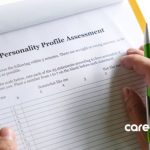Having unconscious biases is part of human nature. But this could hinder your company from recruiting the best new talent. To avoid this, companies around the world are turning to technology in a bid to combat unconscious bias and boost the diversity of their workforce, to ensure they hire the best individuals for their business.
1. Introduce blind skills challenges
While CVs remain the most efficient way of introducing a hiring manager to prospective talent, certain information in CVs can lead to unconscious bias. One way to address this is to encourage ‘blind applications’ that remove details like race, nationality, gender and age – all factors that can lead to biased decisions.
To help recruiters, start-ups such as GapJumpers remove CVs from the application process entirely. It allows employers to create bespoke tests that mimic the challenges of the job itself. Applications are then reviewed by the employers and interviews can be offered based on the scores received.
2. Remove gendered wording
How many of us have ever stopped and considered the inherent gender bias of the language we use every day? When it comes to crafting the perfect job description, the gender implications of words used can have a significant impact on the recruitment process.
Researchers have found that women are much less likely to apply to job descriptions that include ‘masculine-coded’ language such as “active”, “confident” and “driven.” Interestingly, the effect of feminine-coded words like “interpersonal”, “honest” and “support” on male applicants was found to be negligible.
The Robert Walters Group created its own bespoke Adify tool to flag so-called gender bias in job adverts, which can then be removed. As Tom Lakin, senior innovation manager at Resource Solutions explains, “Gender equality is a key priority for our clients, and Adify allows us to support our clients’ diversity goals.”
3. Make data-driven decisions
Another way to minimise unconscious bias is to let intelligent data insights guide your decision-making process.
Talent aggregators like Entelo use big data, predictive analytics and social signals to help hiring managers find and engage with talent. It allows recruiters and hiring managers to rank candidates against open vacancies. This is done through features such as diversity filters and a ‘more likely to move’ function, which assesses the likelihood of candidates moving jobs.
Resource Solutions tested the benefits and functionality of Entelo by identifying and talent-pooling female talent underrepresented in Switzerland. By using the platform’s ‘more likely to move’ function, recruiters achieved a 60% response rate from candidates on LinkedIn — twice what was expected.
Receive hiring tips directly in your mailbox by signing up for our e-newsletters today.
4. Advertise roles through new channels
The future of online recruitment is mobile, with statistics showing 82% of candidates already search for jobs on their smartphone. By 2021, experts predict 87% of all mobile internet traffic to be video since visual content is getting an average of 1200% more shares than written content.
A job description has long been the starting point for hiring managers, but with written content not gaining the cut-through needed on mobile devices, traditional job descriptions could soon make way for something more visual. For instance, the Australian app VideoMyJob enables employers to write a script and record a video of themselves talking about the role, which can then be edited and shared on social media. Faye Walshe, Global Head of Innovation at Robert Walters Group, said: “VideoMyJob is an affordable and authentic service for even the smallest employers to create branded video job ads.”
5. Make your interview process structured
Hiring managers may be tempted to favour an unstructured session to get a better feel for a candidate. But that can make it harder for hiring managers to fairly benchmark candidates, making it more likely that unconscious bias will creep in. Creating a structured process that tests all applicants in the same way ensures they’re all assessed against the same markers.
The simplest way to achieve this is to have a specific set of questions for every applicant – and remember not to diverge from them. This can help reduce subjectivity and allow candidates to be judged against others on the specific answers they give.
6. Have an interview panel
For a more human-based approach, consider introducing interview panels into your recruitment process. Establishing a panel that includes a diverse set of colleagues (in terms of gender, ethnicity, socio-economic background and age) can ensure any personal unconscious biases are mitigated, and helps to consider an applicant from a wider perspective to make a more informed decision.
Ultimately, our unconscious bias is inescapable, but equipping your business with the right tools and processes can significantly reduce its impact on your recruitment process. While new technologies provide rich insights to help guide data-driven decision-making, underpinning new tech with regular diversity training is key to helping hiring managers recognise and reduce their bias blind spots.
This article is contributed by Robert Walters Singapore.
Get started!
Speed up your hiring process by quickly identifying quality candidates. Add screening questions to your MyCareersFuture job postings to easily find applicants that meet your most important requirements.
To use Screening Questions:
- When creating a job posting on MyCareersFuture, add up to three yes/no screening questions.
- When reviewing applicants, filter them based on their responses.
















